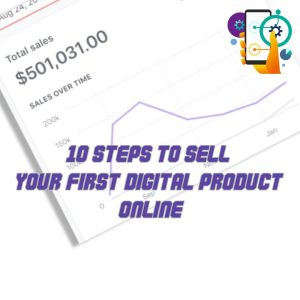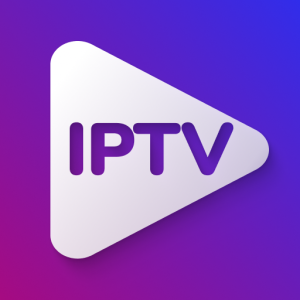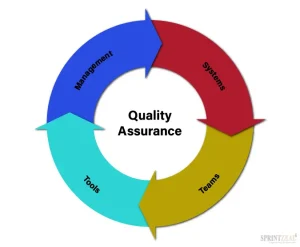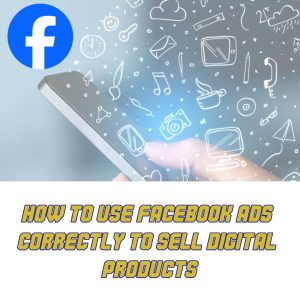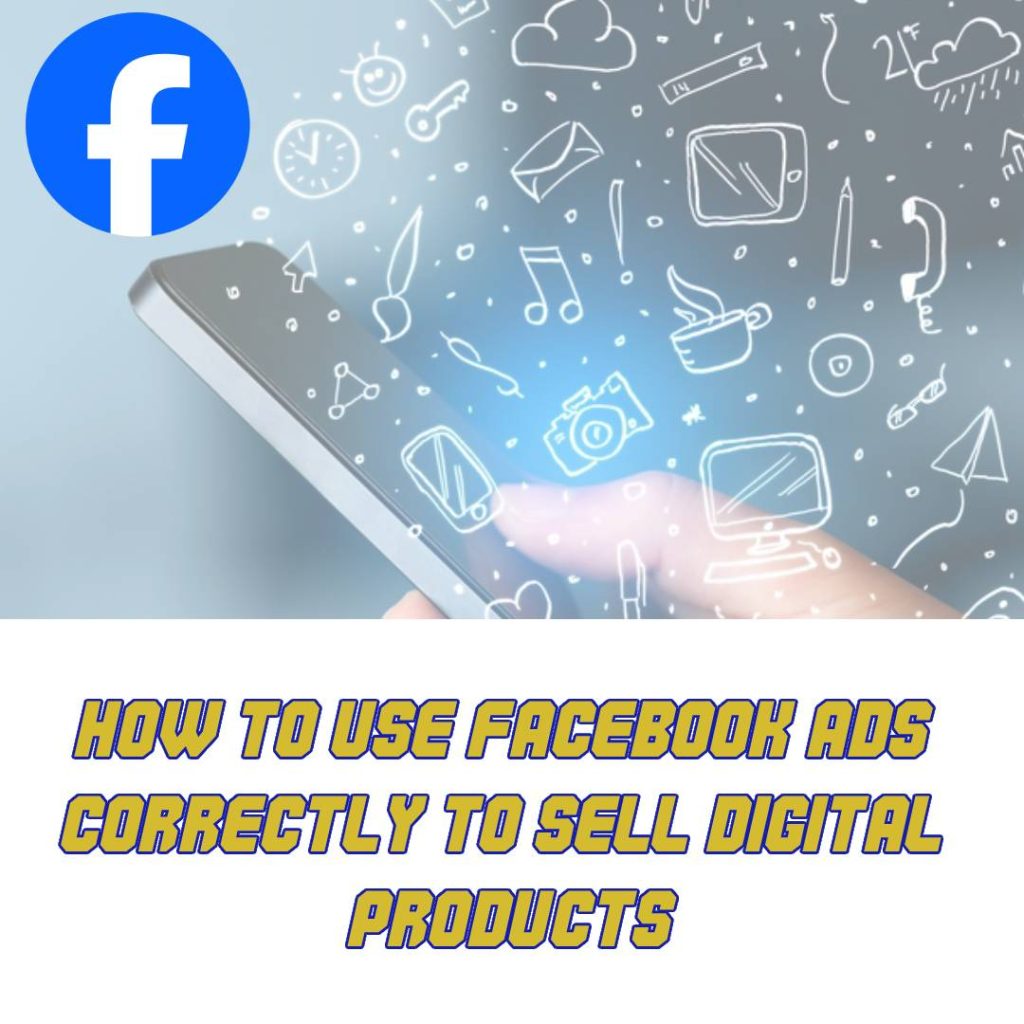
How to Use Facebook Ads Correctly to Sell Digital Products
Facebook Ads is a powerful platform for selling digital products, offering a highly targeted way to reach potential customers based on their interests, demographics, and behaviors. With over 2.8 billion users worldwide, Facebook’s advertising platform can help you connect with a vast audience, making it an ideal tool for promoting e-books, online courses, software, and other digital products.
Here’s a step-by-step guide to using Facebook Ads effectively to sell your digital products:
Step 1: Understand Your Target Audience
Before launching any Facebook Ad campaign, it&8217;s critical to clearly define your target audience. You can segment Facebook users based on various factors, such as:
- Demographics: Age, gender, location, education level, etc.
- Interests: Based on pages users follow, content they engage with, and hobbies.
- Behaviors: Purchase behaviors, device usage, and online activities.
How to Define Your Audience:
- Use Buyer Personas: Develop a persona of your ideal customer, including their pain points, interests, and habits.
- Facebook Audience Insights: Use Facebook’s Audience Insights tool to research your potential audience and find out what they like.
- Custom Audiences: Upload your email list to create custom audiences, or use Facebook Pixel to retarget visitors from your website.
Step 2: Choose the Right Campaign Objective
Facebook offers multiple campaign objectives, each designed for different marketing goals. For selling digital products, consider using the following objectives:
- Conversions: This objective is ideal for driving product sales. Facebook will optimize your ads for people most likely to convert (purchase or sign up).
- Traffic: If you’re directing users to a landing page or product sales page, use this objective to get more clicks.
- Lead Generation: This objective is perfect if you want to collect emails or sign-ups, which you can later use to promote your digital products.
Step 3: Create Engaging Ad Copy and Visuals
Your ad creative (copy, images, or video) is what will catch the attention of potential customers. It’s important to make sure your ad is engaging, relevant, and compelling.
Key Tips for Ad Copy:
- Clear and Concise: Get to the point quickly and clearly describe your product’s benefits.
- Value Proposition: Highlight the unique value of your digital product. Why should people buy it?
- Call to Action (CTA): Include a strong CTA such as “Buy Now,” “Download,” or “Learn More” to prompt immediate action.
Key Tips for Ad Visuals:
- Use High-Quality Images: Ensure your images or videos are visually appealing and related to the digital product you’re promoting.
- Video Ads: Video content often outperforms static images. Showcase your product in action or create a brief demo.
- Consistent Branding: Use colors, logos, and design elements that match your brand identity to increase brand recall.
Step 4: Build a High-Converting Landing Page
Once a user clicks on your Facebook ad, they should land on a page optimized for conversions. The landing page is crucial for turning ad traffic into customers.
Best Practices for a High-Converting Landing Page:
- Compelling Headline: Your headline should grab attention and reiterate the benefit of your digital product.
- Showcase Your Product: Include images or videos of your digital product, along with a detailed description of what it offers.
- Social Proof: Display customer reviews, testimonials, or case studies to build trust with your visitors.
- Simple and Clean Layout: Make the page easy to navigate, with a clear focus on your product and the CTA.
- Mobile-Friendly Design: Ensure your landing page works well on all devices, especially mobile, as a large percentage of Facebook traffic comes from mobile users.
Step 5: Set a Budget and Bidding Strategy
Setting the right budget for your Facebook ads is important to ensure you&8217;re getting a good return on investment (ROI). Facebook allows you to control costs by setting a daily or lifetime budget.
Bidding Strategies to Consider:
- Cost Per Click (CPC): Pay each time someone clicks on your ad. This is ideal when driving traffic to your product page.
- Cost Per Thousand Impressions (CPM): Pay based on the number of times your ad is shown. This is best for increasing awareness.
- Cost Per Conversion: Optimize for conversions (e.g., purchases or sign-ups) to maximize the sales you get from your budget.
Start with a modest budget and gradually increase it as you see positive results and conversions. Always monitor your performance to avoid overspending.
Step 6: Test and Optimize Your Ads
Facebook Ads thrive on optimization. Run A/B tests to figure out what works best for your digital product campaign. Experiment with different ad creatives, copy, targeting options, and even landing pages.
What to Test:
- Ad Formats: Try using different formats like carousel ads, video ads, or single image ads.
- Target Audiences: Test various audiences to see who responds better to your ads (e.g., by age group, interest, or location).
- Ad Placements: Facebook allows you to place ads across different platforms like Instagram, Messenger, and Audience Network. Test which platforms perform best.
- Bidding Strategies: Test whether CPC, CPM, or cost per conversion works better for your specific campaign.
Step 7: Leverage Retargeting Ads
Most people won’t buy your digital product on their first visit. This is where retargeting comes in. Use Facebook retargeting ads to reach users who have interacted with your brand but haven’t completed a purchase.
Setting Up Retargeting:
- Facebook Pixel: Install Facebook Pixel on your website to track user behavior, such as page visits, clicks, and product views.
- Retarget Website Visitors: Create custom audiences based on people who visited your landing page but didn’t purchase.
- Lookalike Audiences: You can also use the Pixel data to create lookalike audiences, targeting people who have similar behaviors to your past customers.
Retargeting helps you stay top-of-mind and nudges potential buyers to return and make a purchase.
Step 8: Measure Results and Improve Performance
It’s essential to track the performance of your Facebook ads to understand what’s working and what isn’t. Use Facebook Ads Manager to monitor key metrics such as:
- Click-Through Rate (CTR): Indicates how many people clicked on your ad.
- Conversion Rate: Shows how many of those clicks resulted in a purchase or other desired action.
- Cost Per Acquisition (CPA): Measures how much it costs you to acquire a customer.
Analyze this data regularly and adjust your ad campaigns accordingly to improve your ROI.
Conclusion
Using Facebook Ads correctly to sell your digital product requires a well-planned strategy, from identifying your target audience to optimizing your campaigns for conversions. By creating engaging ad content, directing users to a high-converting landing page, and continuously testing and optimizing, you can effectively turn ad clicks into sales. Facebook’s robust targeting capabilities, combined with your product’s unique value, can help you reach the right audience and grow your digital product sales.
